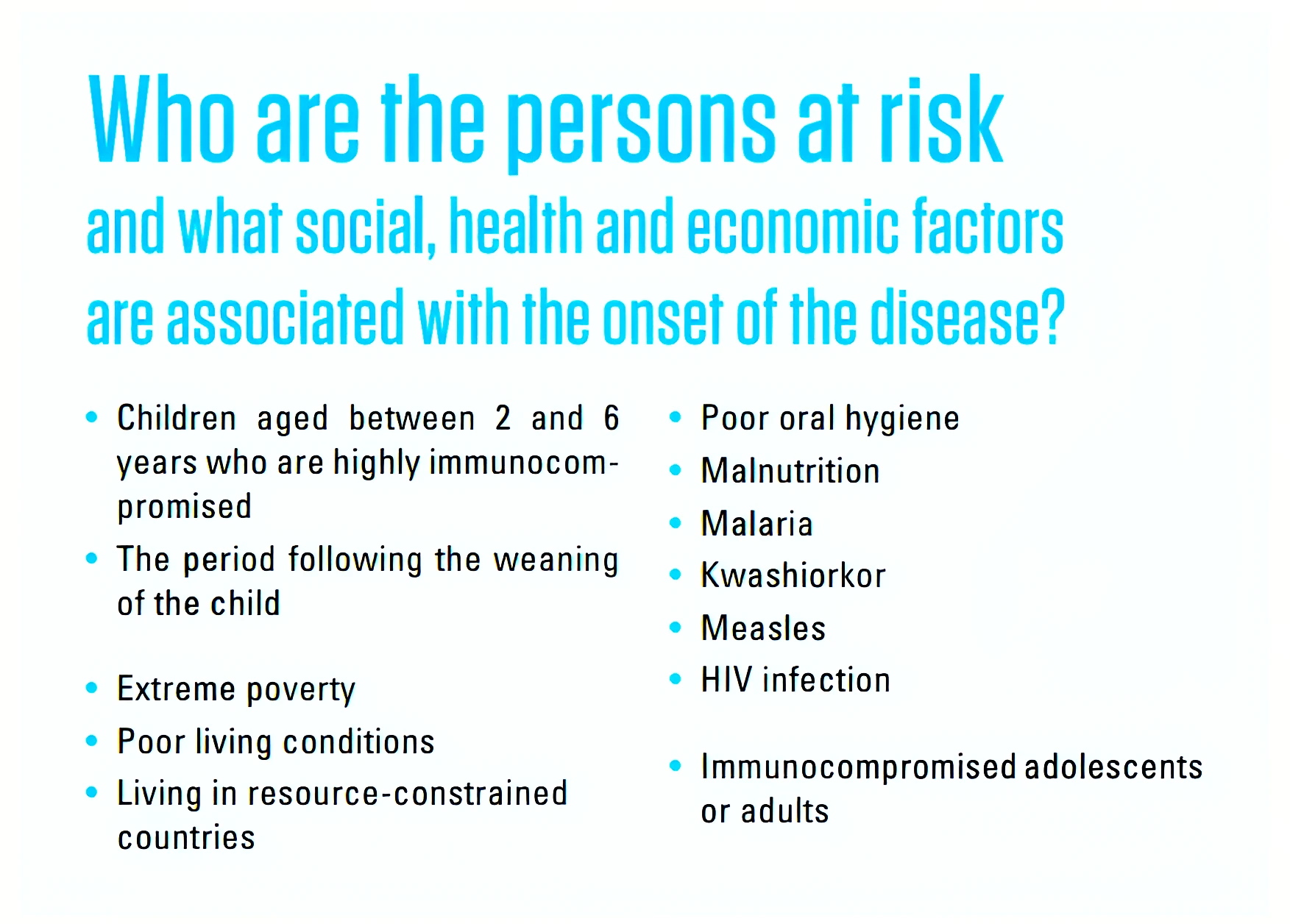Context: Recently, the World Health Organization (WHO) announced the inclusion of noma disease in its official list of neglected tropical diseases (NTDs).
Inclusion of Nova Disease In WHO’s Official List Of Neglected Tropical Diseases
- Recommendation: This decision was recommended by the 17th meeting of the Strategic and Technical Advisory Group for Neglected Tropical Diseases (STAG-NTD).
- The Government of Nigeria spearheaded action to have Noma included in the list of NTDs.
- WHO’s NTD List: Currently, WHO’s NTD list includes 21 diseases or groups of diseases.
About Neglected Tropical Diseases
- NTDs: These are a diverse group of 21 conditions mainly prevalent in tropical areas.
- For Example: Buruli ulcer; and Chagas disease
- They are ‘neglected’ because they are almost absent from the global health agenda.
- Even today, when the focus is on Universal Health Coverage, NTDs have limited resources and are almost ignored by global funding agencies.
- Population Affected: It primarily affects impoverished communities and disproportionately affects women and children.
- Impact: These diseases cause devastating health, social, and economic consequences to more than one billion people.
- Neglected Tropical Diseases road map 2021−2030
- Reduce by 90% the number of people requiring treatment for NTDs
- Reduce by 75% the disability-adjusted life years (DALYs) related to NTD
- Eliminate at least one NTD from 100 countries
- Eradicate two diseases (dracunculiasis and yaws) globally
- Associated Challenges:
- The epidemiology of NTDs is complex and often related to environmental conditions.
- Many are vector-borne, have animal reservoirs, and are associated with complex life cycles.
|
- Significance of Recognition
- The move aims to amplify global awareness, catalyze research, stimulate funding, and boost efforts to control the disease through multisectoral and multi-pronged approaches.
- Interventions addressing the burden of this devastating disease will contribute to achieving universal health coverage, as they will specifically target pockets of underserved populations.
About Noma Disease

- Noma Disease: Also known as cancrum oris or gangrenous stomatitis, it is a severe gangrenous disease of the mouth and face.
- Gangrene: It is the death of body tissue due to a lack of blood flow or a severe bacterial infection.
- Causative Agent: It is caused by the spirochete Borrelia vincenti in association with anaerobic bacteria
- Mortality Rate: It has a mortality rate of approximately 90% and is non -contagious in nature.
- Major Challenges:
- Lack of Awareness: There is an extreme lack of awareness regarding the disease.
- Outdated Data: There are no reliable numbers of cases; the WHO website lists the ‘latest’ estimates of 140,000 cases per year and a prevalence of 770,000 cases. However, the data dates back to 1998.
- Prevention and Cure:
-
- Since the disease has a high mortality rate, early detection is critical because therapy is most effective in the early stages.
- Its spread can be slowed significantly with basic hygiene, antibiotics, and nutritional rehabilitation.
- Effective drugs like sulfonamides and penicillin and adequate surgical treatment are needed, however, they remain inaccessible for many due to extreme poverty.
News Source: DTE
![]() 19 Dec 2023
19 Dec 2023
